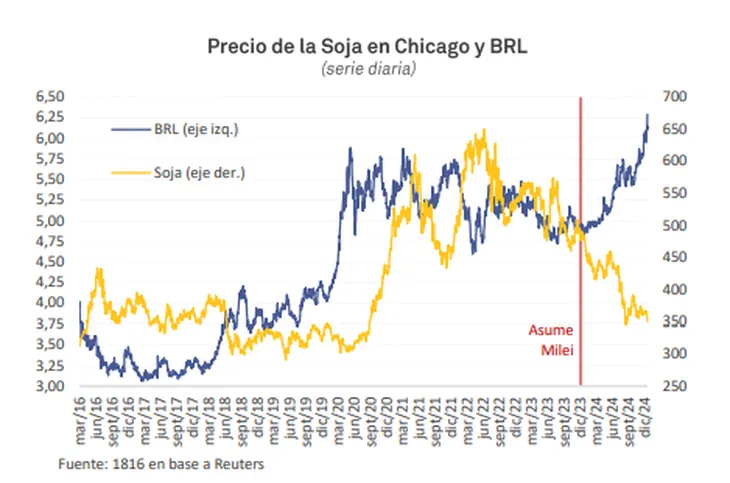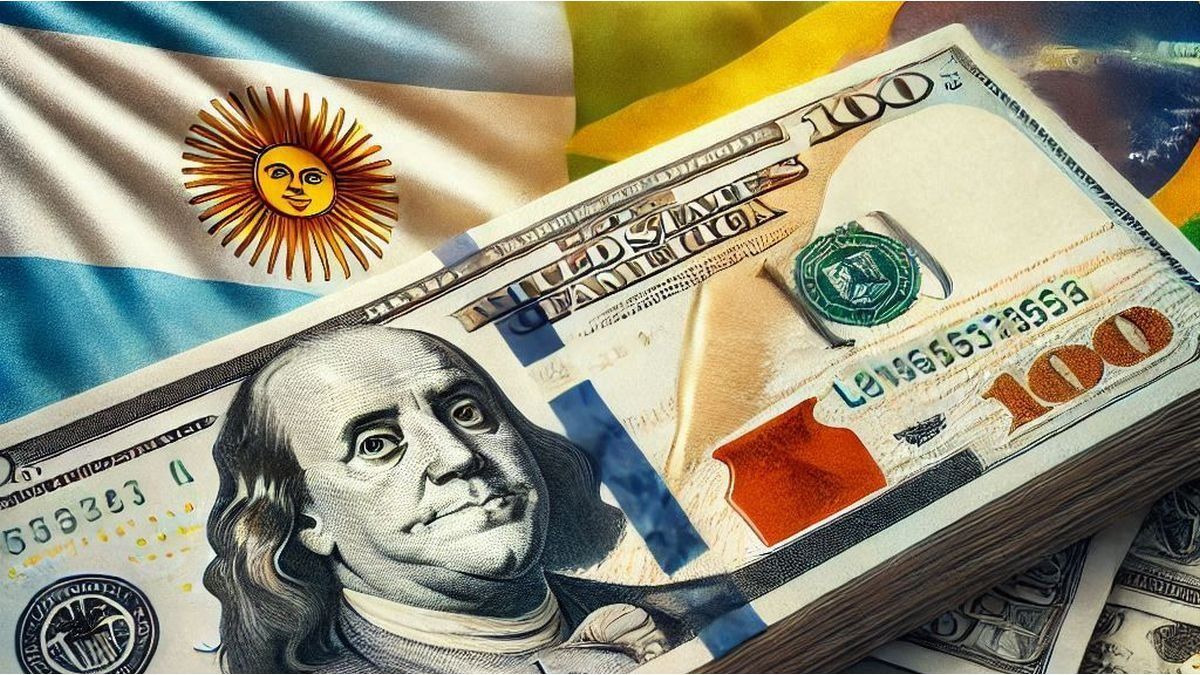The devaluation of the real of recent weeks exacerbated a problem that had already been incubating throughout the year due to the exchange rate anchor policy: the rise in the price of Argentina in dollarswhich adds pressure to Luis Caputo’s scheme. One of the economists to whom government officials pay the most attention noticed the problem and warned about the growing price disparity with Brazil.
“Argentina is today 19% more expensive than Brazil in dollars”he remarked Alberto Cavalloson of Domingo, Harvard professor and director of PriceStats. The number published by the economist arises from comparing a basket of identical food, fuel and electronic products on both sides of the border.
In his account on the social network
image.png
“Historically, the law of the single price is fulfilled on average between both countries (blue line), and deviations are usually corrected in a few months”said the economist. The comment is a warning sign regarding the exchange rate pressures which presupposes the current level of imbalance.
For now, Brazil is Argentina’s main trading partnerthe most important destination for industrial exports and national tourists who go on vacation outside the country.
The last point is not minor. In the second half of 2024 the tourism balance deficit increased and summer promises to be challenging. For example, reservations to travel abroad in the coming months doubled. The consultant Epyca calculated that during the summer break US$3,000 million will be spent on expenses of Argentines abroad.
The BCRA recently indicated that half of these expenses are covered with its own dollars, which implies that the other half puts pressure on reserves.. The question is whether the nominal reduction of the dollar card from the expiration of the COUNTRY Tax will alter that equation. The Government believes not, since it is still about $200 above the price of the MEP dollar.
Dollar: some foods are already much more expensive than in Brazil
In line with the PriceStats calculation, the rural entity Coninagro compared the prices of 18 food products in online supermarkets in both countries. In this case, the balance is distributed. But there are articles with a very marked difference in favor of Brazil.
The most notable cases are: black beans (144% more expensive in Argentina), yerba (70%), rice (59%), pork (34%) and olive oil (33%). On the contrary, oranges, apples, sunflower oil and wine are more expensive in Brazil, among other products.
Headwind: for the city, the real pressure
Last week, parallel dollars woke up in Argentina after several months of exchange rate pax. City analysts linked it, among other factors, to the devaluation of the real.
The SBS Group noted: “The sudden rise in the CCL occurred, we believe, for both domestic and external reasons. On the local side, we believe that there may have been some pressure from investors who wanted to realize their ‘carry trade’ profits, although we consider that the external context weighed more. As we highlight elsewhere in the report, the real one comes pressing hardwith an acceleration in its devaluation rate that led the Bank of Brazil to intervene with reserves.”
On the external front, he added as complicating factors the prospect of the Fed making fewer rate cuts next year and the fall in the international price of soybeans, which days ago hit 2006 lows in real terms.
image.png

The truth is that the dollar touched 6.3 reais last weekfor the first time since there are records, despite the strong interventions of the Brazilian central bank. This Monday it operated at 6.18that is, 3.5% above the level at which November closed.
“Besides, The average price of our export commodities fell 1.8% in the weekdriven by soybean oil (-7.1%), but contained by flour (+3.2%),” calculated a report from the Economic Studies Management of Banco Provincia. These are two determining variables for the Argentine economy, whose movements have an impact on the exchange front.
Source: Ambito
I am an author and journalist who has worked in the entertainment industry for over a decade. I currently work as a news editor at a major news website, and my focus is on covering the latest trends in entertainment. I also write occasional pieces for other outlets, and have authored two books about the entertainment industry.




